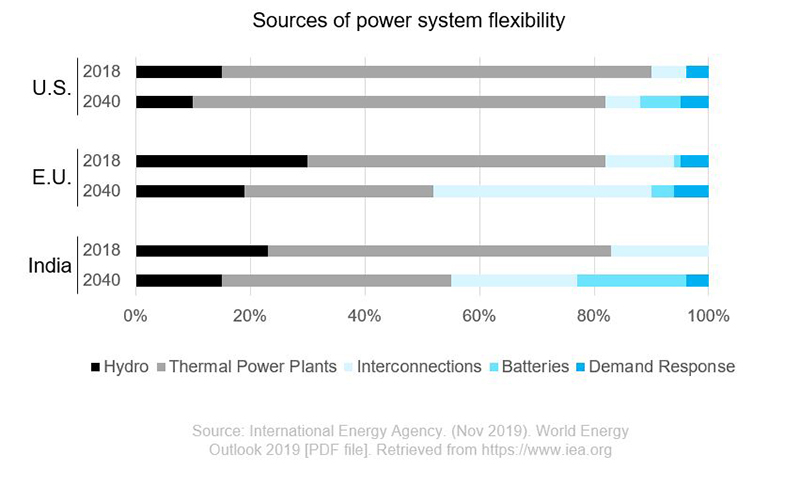A silent hero during these difficult times: Flexibility of our electricity infrastructure
By Aytek Yuksel, Content Marketing Leader - Power Systems

COVID-19 continues to impact many aspects of our lives; most notably making flexibility the cornerstone of our lives. Flexibility comes in many forms in our daily routines. Sometimes, flexibility is working from home instead of going to the office every day. Other times, flexibility is our kids participating in on-demand or online education lessons, instead of being physically at a school for certain hours.
Whether it is school, work or family life, we are learning how to be more flexible to power through this pandemic. But flexibility also goes beyond these aspects and manifests itself in another aspect of our lives: Electricity.
A flexible electricity infrastructure prevents large-scale black-outs
The energy sector is also adjusting to a world with COVID-19, and this is where the flexible electricity infrastructure becomes our silent hero. Flexibility of the electricity infrastructure accommodates changes in electricity demand and supply. Our electricity has remained mainly uninterrupted, thanks to this flexibility, despite necessary changes in staffing and a significantly different demand for electricity.
This flexibility is accomplished through different components of the electricity infrastructure. Let's cover a few of these components making our electricity infrastructure more flexible.
- Distributed energy resources: Distributed energy resources (DERs) are electricity-producing resources connected to the local electric distribution system. Many decentralized technologies ranging from solar rooftop panels to backup power generators are considered DERs. They introduce our electricity infrastructure an interconnected ecosystem of smaller power generation systems at or close to the point of consumption. As the demand or supply of electricity fluctuates, these decentralized technologies work in collaboration with central generation components to ensure access to electricity stays uninterrupted.

- Energy storage systems: Energy storage technologies, one of the many DERs, can store and release energy in the form of electricity when needed. Their role in delivering flexibility is expected to rise. In fact, the International Energy Agency forecasts a 40-fold increase in stationary energy storage capacity by 2040 1. These energy storage systems become even more valuable in areas where renewable sources are commonly used, as they dispatch the needed energy when the wind isn’t blowing, and the sun isn’t shining.
- Demand side management: This proactive management enables customers to manage their electricity demand and reduce their bills, while making the electricity eco-system more flexible. For residential customers, use of a smart thermostat and collaboration with the utility company or thermostat vendor is one way to accomplish this. For industrial and commercial customers, the bills include both energy consumed (kWh) and power used, or demand charge (kW); meaning these customers could minimize demand charge costs by producing, storing and using some of their electricity need on-site.
Moreover, grid interconnections and utilization changes within central power plants also help the electricity infrastructure remain flexible during these challenging times.
Many industries critical to overcoming this pandemic have uninterrupted access to electricity, thanks to the flexibility within the infrastructure
Flexibility of our electricity infrastructure is critical during this pandemic more than ever before. Many critical facilities and services such as healthcare, water plants, data centers, greenhouses, food manufacturing and textile facilities, producing personal protective equipment (PPE), play a key role in overcoming this pandemic.
Sign up below for Energy IQ to periodically receive relevant insights and trends about energy markets. To learn more about the distributed generation solutions Cummins Inc. offers, visit our webpage.
References:
1 International Energy Agency. (Nov 2019). World Energy Outlook 2019 [PDF file]. Retrieved from https://www.iea.org
Author Profiles

Aytek Yuksel, Content Marketing Leader - Power Systems
Aytek is a marketing leader at Cummins, focusing on technology and thought leadership. Since joining in 2008, he has held various marketing roles and now shares insights on markets, technologies, and energy transition. Aytek lives in Minneapolis with his wife and two kids.
Related Tags